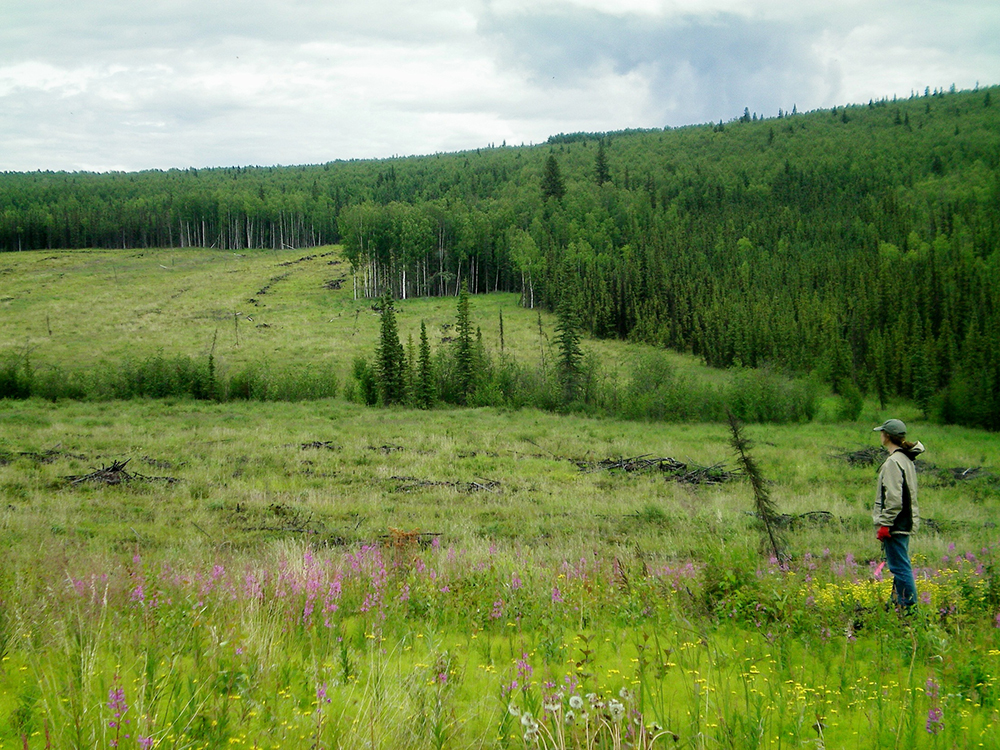As increasingly severe wildfires burn more of the North American West each year, how people living there use fuel treatments, such as prescribed burns or planting fire-resistant trees around their homes, can determine how destructive fires will be to communities. The National Science Foundation has awarded $2.3 million to a multi-university team, which includes Regents’ professor Michelle Mack, assistant professor Joseph Little and assistant research professor Xanthe Walker, to develop socially and ecologically feasible fire breaks within communities that are most at risk, like Alaska and western Canada.
The seven-institution team, led by Jennifer Schmidt of the Institute of Social and Economic Research (ISER) at the University of Alaska Anchorage, includes land managers, economists and ecologists from the Center for Ecosystem Science and Society and The W. A. Franke College of Business at NAU, the University of Colorado, Tanana Chiefs Conference and the USFS Wildfire Research Center (WiRē). Using this interdisciplinary approach, the “Socio-ecological considerations for sustainAble Fuel treatments to Reduce wildfire Risk (SAFRR)” team will work with residents to design fuel treatments that can help protect their homes from wildfire.
“Many communities in the boreal biome are bullseyes of flammability,” said Mack, one of the co-principal investigators on the project. “They are surrounded by old, highly flammable spruce forests maintained by years of fire suppression. But as plant ecologists, we’ve learned that we can actually use trees to protect communities. Hardwood forests burn less severely, and they can slow fires. So we’re asking, can we engineer forests that protect communities in a way that works for the people who live there?”
“These communities really understand their local environments the best, so it’s important for us to work with them when we’re designing fuel treatments,” said Little, a co-principal investigator on the project. “You don’t want to naively assume that people will be OK with removing vegetation around their home, because maybe that means fewer berries, or fewer moose.”
“By looking at existing fuel treatments and what we know about how these forests are changing over time, we hope to find ways to nudge natural processes to create less flammable forests,” said Walker, a co-principal investigator on the project.
“Since the 1990s, there’s been a dramatic increase in the amount of boreal forest burned each year in Alaska and western Canada,” Schmidt said. “This area has experienced some of the most deadly and costly wildfire events in the last decade.”
“Fire is a very real health hazard and stress for people who live in the boreal forest,” Mack said. “Most of these boreal fires don’t get suppressed. You can’t put these fires out—only weather puts these fires out. Adaptations like fire breaks are one of the only things we can do before a fire is there.”
Little said this project builds on research he’s done with rural communities on the Kenai Peninsula in Alaska. That work suggested that people tend to pursue fuel treatments their neighbors pursue. The SAFRR team will apply that knowledge as they engage a wider range of communities over the next four years.
“It’s a new approach to an older problem, and I think it’s going to be really fruitful,” Little said.
Kate Petersen | Center for Ecosystem Science and Society




